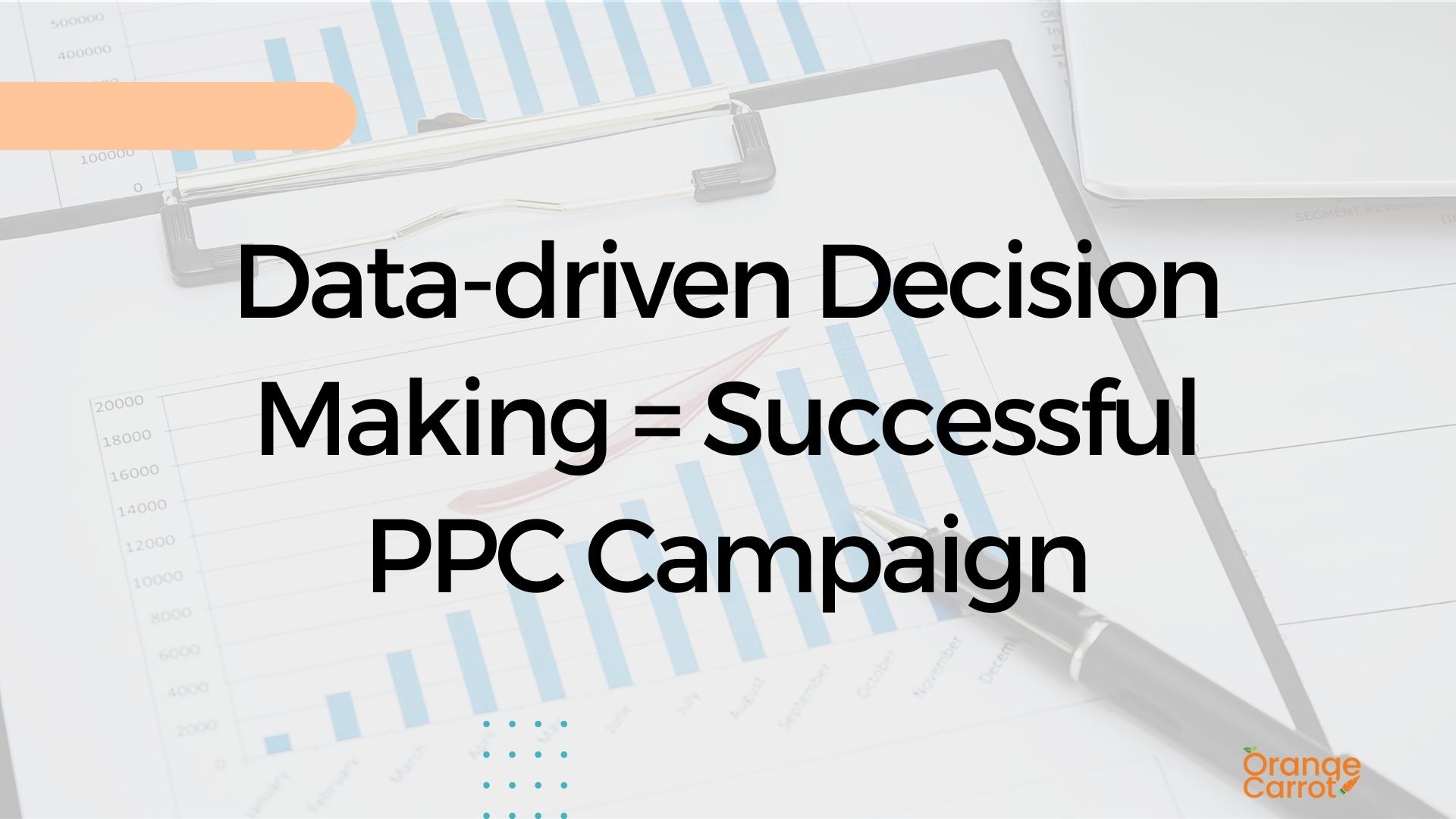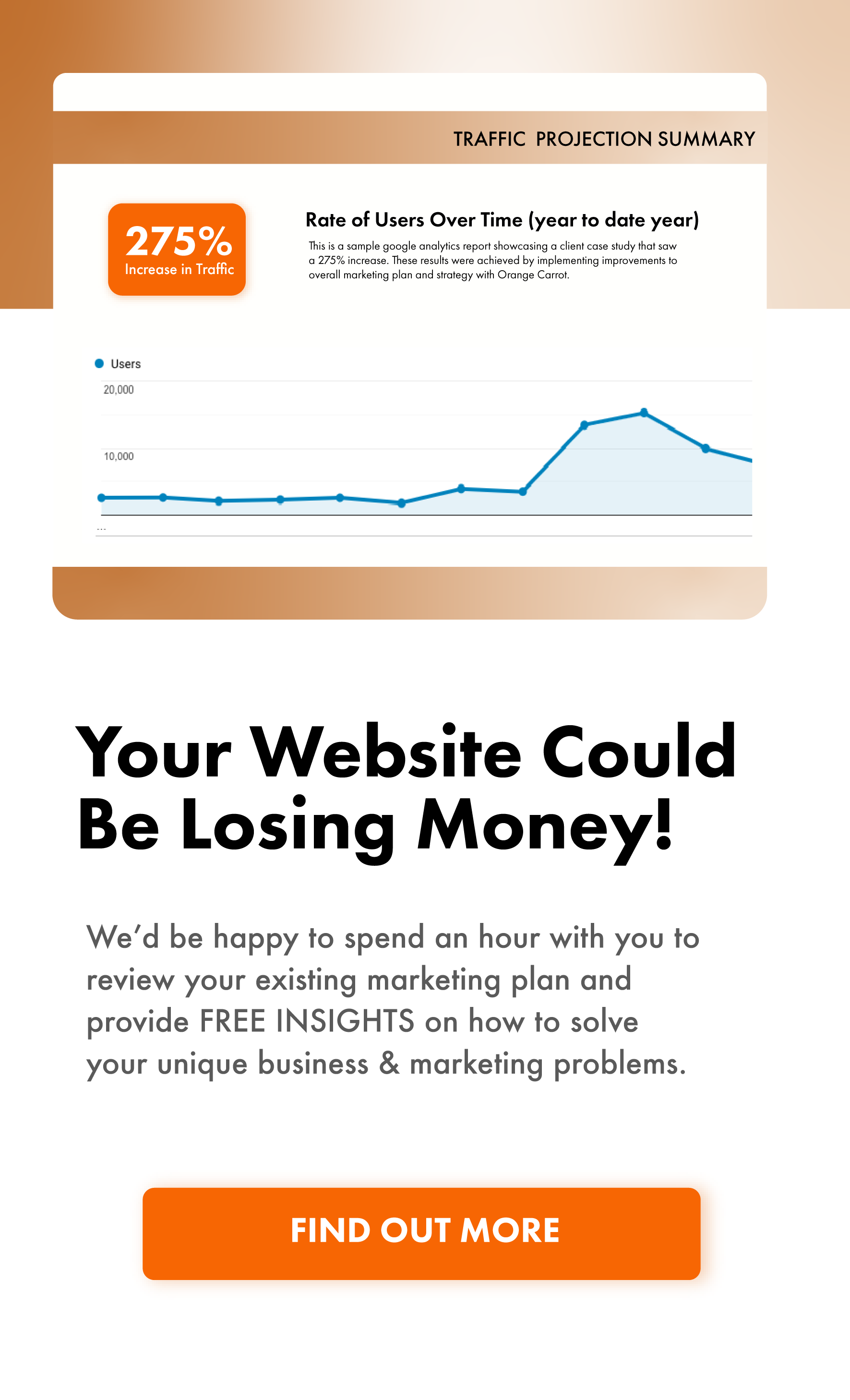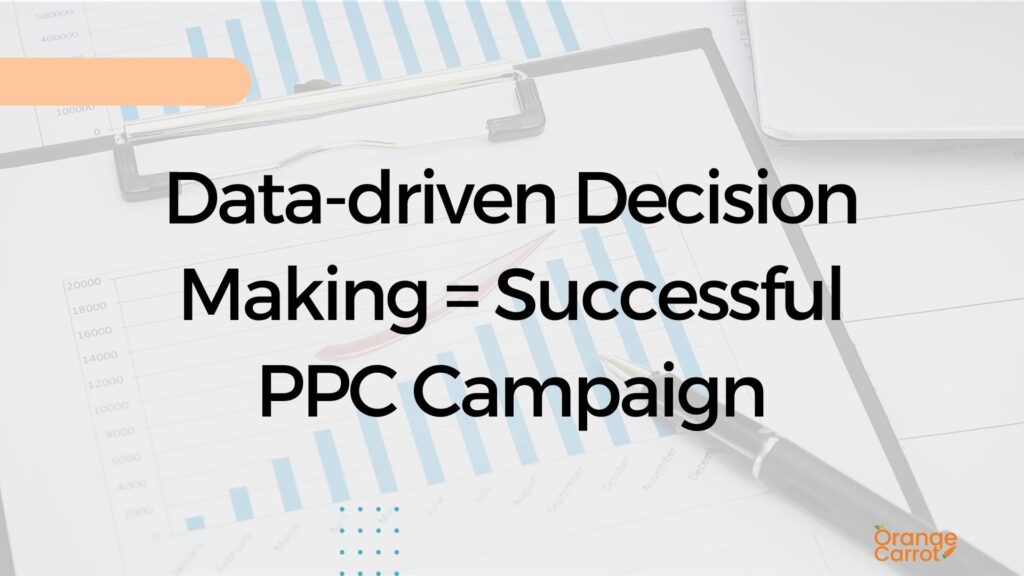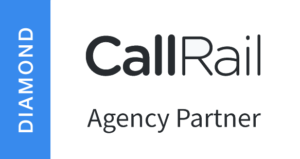Introduction
In today’s fast-paced digital marketing landscape, having a successful Pay-Per-Click (PPC) campaign is crucial for driving growth and staying ahead of the competition. One key element that significantly impacts PPC success is data-driven decision making.
By harnessing the power of data analysis and integrating it into your marketing strategy, you can optimize your campaigns for maximum return on ad spend (ROAS), better understand your target audience, and achieve improved results.
In this post, we’ll explore why data-driven decision making is essential for successful PPC campaigns and provide insights on how to effectively implement it within your own campaign strategies.
Key Takeaways
- Data-driven decision making is essential for maximizing ROAS, understanding your target audience, measuring campaign performance, identifying areas for improvement, and ultimately driving successful PPC campaigns.
- Tools such as Google Analytics and Microsoft Clarity are important for collecting and analyzing data to refine targeting strategies and continuously optimize campaigns.
- Key performance indicators like click-through rates, conversion rates, and quality scores provide valuable insights into campaign performance to help make informed decisions about where to allocate ad spend.
- By incorporating data - driven decision making into your PPC strategy through comprehensive tracking of KPIs and innovative testing techniques like A/B testing, businesses will be able to analyze their customers preferences while also building efficient brand awareness leading them forward in increasingly competitive markets.
The Importance Of Data-Driven Decision Making In PPC Campaigns
Data-driven decision making is essential in PPC campaigns to maximize ROAS, understand the target audience, measure campaign performance, identify areas for improvement, and use data to drive decision making.
1. Maximizing ROAS
Maximizing return on as spend (ROAS) is a crucial aspect of any PPC campaign, as it allows marketers to allocate their budget more effectively and increase overall profitability.
Data-driven decision-making plays an essential role in achieving this by providing insights into which campaigns, ad groups, or keywords perform best and should be prioritized for future spending.
In addition to optimizing bids, data-driven approaches also help advertisers fine-tune their ad copy and landing pages to improve performance further. By conducting A/B tests and heat mapping analysis, they can uncover information about user behavior such as click patterns or engagement metrics that ultimately lead to increased conversion rates.
2. Understanding Your Target Audience
Understanding your target audience is a critical aspect of any successful PPC campaign. Data-driven decision making allows you to gain insight into your customers’ behavior and preferences, enabling you to create highly targeted campaigns that speak directly to their needs.
For example, if you are promoting a new line of athletic wear aimed at young adults aged 18-24, data analysis can help identify what types of content or messaging will resonate with this group.
You might find that they respond better to social media ads featuring real-life examples of how the clothing improves performance or images reflecting current trends in fashion.
In summary, understanding your target audience through data analysis enables businesses to develop more effective PPC campaigns that drive conversions and ultimately improve ROI.
3. Measuring Campaign Performance
Measuring campaign performance is a crucial aspect of running a successful PPC campaign. Data-driven decision making plays an essential role in this process, as it helps you analyze your campaign’s impact and make changes based on the data.
For instance, if you notice that your CTR is low, it may indicate that your ad copy isn’t engaging enough or not relevant to the target audience. Similarly, if your conversion rate is low compared to industry standards, it may be time to revisit your landing page design or messaging strategy.
Data-driven decision making enables marketers to continuously test and optimize their PPC campaigns for better results. For example, if A/B testing reveals that one ad performs significantly better than others or by refining target audiences with advanced targeting options like retargeting ads can improve relevance while reducing costs per click ultimately enhancing overall ROI measurement.
4. Identifying Areas For Improvement
Data-driven decision making is paramount in identifying areas for improvement within PPC campaigns. By analyzing data, marketers can uncover patterns and trends that may not be visible at first glance.
In addition to optimizing campaign performance, data analysis can also help identify areas for improvement outside of the campaign itself. By tracking customer behavior on landing pages and website analytics tools like heat mapping, marketers can determine which elements are engaging users and which ones are causing them to drop off.
5. Using Data To Drive Decision-Making
Data-driven decision-making is a key factor in the success of any PPC campaign. By analyzing data, marketers can make informed decisions about their strategies and tactics.
For instance, using analytics tools like Google Analytics or AdWords Editor enables marketers to track engagement metrics such as click-through rates (CTR) and conversion rates to measure campaign performance.
Heat mapping shows which parts of the landing page receive more clicks and attention than others, providing useful insights into what needs improving.
By utilizing this data effectively, marketers are empowered to optimize campaigns with precision targeting techniques for improved ROI while also gaining valuable customer insights that help them tailor future marketing strategies according to changing consumer preferences.
Tools For Collecting And Analyzing Data
1. Google Analytics
Google Analytics is a powerful tool for collecting and analyzing data for your PPC campaigns. By using Google Analytics, you can track traffic sources, user behavior on your website, bounce rates, and much more.
One of the key benefits of using Google Analytics is that it allows you to set up goal tracking. This means that whenever a customer completes a specific action on your site (such as filling out a form or making a purchase), you can track that as a conversion and measure the success of your campaigns in real-time.
2. AdWords Editor
AdWords Editor is a free, downloadable application from Google that enables advertisers to manage their campaigns offline. With AdWords Editor, marketers can make bulk changes to multiple ads and ad groups at once by simply uploading spreadsheets or copying and pasting information within the platform.
Being able to work with AdWords Editor has several benefits for PPC campaign managers. First of all, it allows them to save time because they can easily copy and paste data instead of having to manually enter it into the interface one item at a time.
Moreover, you can preview your edits before publishing them live on the web which reduces errors in ad copy writing or targeting strategy implementation.
3. Keyword Planner
Another useful tool for collecting and analyzing data in a PPC campaign is the Keyword Planner. This feature, which is part of the Google Ads platform, helps identify valuable keywords that can be used in ad campaigns to drive relevant traffic to a website.
The Keyword Planner allows users to search for keywords and phrases related to their products or services and provides information on search volume, competition levels, and estimated costs per click.
For example, let’s say a business wants to promote its new line of organic pet food through PPC advertising. By using the Keyword Planner, they could discover that “organic dog food” has high search volume but also high competition and cost-per-click estimates.
4. Heat Mapping
Heat mapping is a valuable tool for collecting data on user behavior and interaction with your website. This analysis involves tracking and measuring where users click, scroll, and spend the most time on your site by using color-coded visual representations.
For example, by analyzing the heat maps of landing pages for a PPC campaign, marketers can quickly identify which parts of the page generate more attention from visitors.
They may learn that certain images or call-to-action buttons have higher conversion rates than others and use that information to optimize the page to increase conversions.
Furthermore, understanding how users interact with your website allows you to make informed decisions based on customer behavior rather than assumptions when devising marketing strategies.
5. A/B Testing
A/B testing is an essential component of successful PPC campaigns. It involves creating two versions of an ad, with slight variations in elements such as the headline or call-to-action, and testing them to measure which version performs better.
By using data-driven decision making to analyze the test results, marketers can identify what resonates with their target audience and make changes accordingly.
A/B testing allows for continuous improvement in ad copy, landing pages, and overall campaign performance. For example, a company may test two different headlines for their ad promoting a new product: one focusing on its unique features and another highlighting its affordability.
Key Performance Indicators (KPIs) In PPC Campaigns
Understanding key performance indicators (KPIs) such as click-through rates (CTRs), conversion rates, cost-per-click (CPC), and quality score allows marketers to measure the success and effectiveness of a PPC campaign.
Click-Through Rates (CTRs)
Click-Through Rates (CTRs) are a key performance indicator (KPI) in PPC campaigns and refer to the number of clicks your ad receives divided by the number of times your ad is shown.
CTRs help measure the success of an ad campaign, as they show how many people clicked on your ads after seeing them.
However, it’s important to note that a high CTR alone doesn’t guarantee success in a PPC campaign. The ultimate goal is conversions, so it’s necessary to track other KPIs such as conversion rates and cost-per-conversion alongside CTRs.
Additionally, optimizing for CTR may not always be the best strategy; sometimes lower-CPC keywords with higher conversion rates can lead to better results overall.
Conversion Rates
Conversion rates are one of the key performance indicators (KPIs) that data-driven decision making helps in measuring. It is a metric that tracks the number of people who take an action after clicking on your PPC ad, such as making a purchase or filling out a contact form.
For example, if you have low conversion rates, it could indicate issues with your landing page design or poor targeting of your ads. On the other hand, high conversion rates suggest that your ads and landing pages effectively convert potential customers into paying ones.
Cost-Per-Click (CPC)
Cost-Per-Click (CPC) is a key performance indicator in PPC campaigns that measures the amount of money advertisers pay each time someone clicks on their ads.
This metric is important because it directly affects the cost-effectiveness of your campaign.
Lowering CPC helps optimize ad spend by minimizing costs per click while still meeting performance objectives. To achieve this, marketers must investigate factors such as keyword competition and ad relevance level.
For example, increasing quality scores can help reduce overall CPCs for high performing keywords while reducing irrelevant clicks from wrong audiences. It’s also essential to continuously monitor CPC since external factors such as seasonality and changes in search volume could influence variability over time.
Quality Score
Quality Score is a crucial metric in PPC campaigns that measures the relevance and quality of your ad copy, landing pages, and keywords. It impacts your cost-per-click (CPC) and ad rank, which affect your placement on search engine results pages (SERPs).
To achieve a high-quality score, you need to ensure that your ads are relevant to user search queries, have well-written compelling ad copy with strong calls-to-action (CTAs), targeted keywords with high intent behind them.
Creating optimized landing pages with clear messaging that matches users’ expectations also helps improve the overall user experience.
For example, suppose you’ve noticed low CTRs or conversion rates despite having high bids or targeting specific demographics. In that case, it may be time to revisit various elements of your campaign’s structure such as keyword match types or negative keywords to improve ad relevance further.
Understanding The Importance Of Data-Driven KPIs
Key Performance Indicators (KPIs) are essential in measuring the success of your PPC campaign and determining whether you are achieving set goals. These KPIs allow you to track progress, identify areas that need improvement and make data-driven decisions to optimize ROI.
Using data-driven KPIs help you understand how customers interact with your ads, enabling you to refine targeting strategies by offering highly relevant ads and landing pages that align with their interests.
Data enables marketers to forecast customer behavior, measure overall sales generation, brand awareness, lead generation as well as enhancing product development.
Data analysts consult subject matter experts while following data-driven decision making principles which allows for more informed marketing analytics based on real-time metrics collected from various analytics tools such as Google Analytics or AdWords Editor.
In education too researchers have found significant benefits from conducting research supported by data-driven analysis techniques leading towards accurate assessments that can improve student outcomes.
Implementing Data-Driven Decisions In PPC Campaigns
Implementing data-driven decisions in PPC campaigns involves adjusting bidding strategies, optimizing ad copy and landing pages, refining target audience, and continuously testing and optimizing for improved performance.
Adjusting Bidding Strategies
Adjusting bidding strategies is an important aspect of data-driven decision making in PPC campaigns. Here are some ways to make this adjustment:
- Analyze performance data regularly: Regular analysis of performance data is essential to identify which bidding strategies are working effectively and which ones require optimization.
- Utilize automated bidding: Many advertising platforms offer automated bidding options that use real-time data and machine learning algorithms to optimize bids based on campaign performance.
- Set clear goals for your PPC campaign: Setting clear goals and objectives will help you determine the best bidding strategy to use, such as maximizing conversions or minimizing cost-per-click.
- Adjust bids based on location and time of day: Data analysis can help you identify the locations and times when your ads perform best, allowing you to adjust your bids accordingly for more effective targeting.
- Experiment with different bid strategies: Don't be afraid to try out different bidding strategies like manual CPC, automatic CPC, or target CPA, and analyze the results over time.
Data-driven decision making helps in identifying which strategies work best for achieving campaign goals. By regularly analyzing performance data, utilizing automated bidding options, setting clear campaign objectives, adjusting bids based on location and time of day, and experimenting with different bid strategies, you can adjust your bidding strategy to optimize PPC campaign performance.
Optimizing Ad Copy And Landing Pages
Optimizing ad copy and landing pages is an essential step in achieving a successful PPC campaign. Here are some tips:
- Use clear and concise language that matches user intent.
- Highlight unique selling points (USPs) to differentiate from competitors.
- Use engaging visuals and videos to increase click-through rates.
- Make sure landing pages are relevant to the ad copy and have a clear call-to-action (CTA).
- Include trust signals such as customer reviews, security badges, and social proof to increase trust and conversions.
- Continuously test different versions of ad copy and landing pages using A/B testing to optimize for better results.
Data-driven decision making can help identify which ad copy and landing page variations perform better based on key performance indicators (KPIs) such as CTRs, conversion rates, and quality score. By analyzing these metrics, advertisers can make informed decisions about which ad variations to use to maximize ROI and improve campaign performance.
According to the important facts outlined, data-driven marketing helps in optimizing customer information, developing marketing strategies, measuring performance, setting goals, and creating highly targeted campaigns for maximum impact. With these benefits at stake, it’s clear that optimizing ad copy and landing pages through data-driven decision making is essential for a successful PPC campaign.
Refining Target Audience
Refining the target audience is a crucial part of data-driven decision making in PPC campaigns. It involves analyzing customer behavior and characteristics to develop highly targeted campaigns that resonate with them.
For instance, if you’re running a PPC campaign for an educational institution, refining your target audience could involve researching key demographics like age range or geographical location where they are most prevalent.
With this information in hand, you can create custom ads and messaging that resonates with potential students who fit this profile. This approach ensures that every click on your ad has a high probability of conversion since it’s being seen by someone who’s likely to be interested in what you offer.
Continuously Testing And Optimizing
To ensure the success of a PPC campaign, it’s important to continuously test and optimize. This involves regularly analyzing data and making adjustments to improve performance. Here are some ways to do this:
- Conduct A/B testing on ad copy and landing pages to see which versions perform better.
- Experiment with different bidding strategies, such as adjusting bids based on time of day or device type.
- Refine target audience by analyzing data on demographics, interests, and behaviors.
- Use heat mapping tools to understand where users click and how they interact with your website.
- Regularly review key performance indicators (KPIs) such as click-through rates (CTRs), conversion rates, and cost-per-click (CPC) to identify areas for improvement.
- Make data – driven decisions based on the insights you gather from these tests and optimizations.
By continuously testing and optimizing your campaign, you can ensure that it remains relevant and effective over time. This approach helps you stay ahead of the competition, maximize ROI, and create highly targeted campaigns that generate sales and lead generation.
Benefits Of Data-Driven Decision Making In PPC Campaigns
Data-driven decision making in PPC campaigns leads to improved ROI, enhanced targeting and relevancy, customer behavior insights, better campaign performance, and a competitive advantage.
Improved ROI
Improving return on investment (ROI) is the ultimate goal of any PPC campaign, and data-driven decision making can help achieve this. By analyzing key performance indicators such as click-through rates, conversion rates, and cost-per-click, marketers can make informed decisions about bidding strategies, ad copy optimization, landing page refinement and targeting audience.
With access to robust analytics tools like Google Analytics and AdWords Editor along with keyword planner’s insights provided by companies like SEMrush or Moz; it’s never been easier for digital marketers to get an in-depth understanding of their campaigns’ performance.
By leveraging these resources to make data-driven decisions in real-time based on up-to-date information will ultimately lead to higher ROI percentages than those who just guess at what works best without using data science techniques.
Ultimately though the benefit – an improved ROI – speaks for itself: more bang for your buck!
Enhanced Targeting And Relevancy
Data-driven decision making is crucial in enhancing targeting and relevancy in PPC campaigns. By analyzing data, marketers can gain valuable insights into their target audience’s preferences, behaviors, and purchase habits.
For example, suppose a business selling athletic shoes runs a PPC campaign targeting fitness enthusiasts. Data analysis may reveal that the majority of clicks are coming from women aged 25-34 who live in urban areas.
By using data as a guide for decision making, businesses can create highly targeted campaigns with messaging that resonates with their audiences.
Customer Behavior Insights
One of the most significant benefits of data-driven decision-making in PPC campaigns is the ability to gain valuable insights into customer behavior. By collecting and analyzing data from various sources such as website analytics, social media engagement, and email marketing campaigns, marketers can identify patterns and trends that reveal how customers interact with their brand.
For instance, by tracking conversion rates across different landing pages or ad variations, marketers can determine which elements are resonating with their target audience and optimize accordingly.
They may also use heat mapping tools to visualize user clicks on a webpage or app interface in real-time which provides insights into how users interact with different elements.
Data-driven decision making enables PPC advertisers to create highly targeted campaigns tailored specifically for their audience’s unique preferences enabling them to get an edge over competitors.
Enhanced Campaign Performance
Data-driven decision making is critical to enhancing campaign performance in PPC advertising. By analyzing data, marketers can quickly identify what works and what doesn’t work within their campaigns.
They can use this information to optimize targeting strategies, refine ad copy and landing pages, adjust bidding strategies, and test different variations of ads.
Furthermore, data analysis allows businesses to gain insight into customer behavior, which can ultimately lead to better marketing decisions. Accessing metrics such as click-through rates (CTRs), conversion rates, cost-per-click (CPC), and quality score helps marketers optimize their campaigns for maximum ROI while simultaneously improving customer engagement.
Competitive Advantage
Implementing data-driven decision making in your PPC campaign can give you a competitive advantage over other businesses. By evaluating key performance indicators such as click-through rates, conversion rates, and cost-per-click, you’ll be able to identify areas of improvement and adjust your strategy accordingly.
This will allow you to optimize ad copy and landing pages, refine your target audience, and continuously test and optimize your campaigns for better results.
Businesses who implement data-driven decision making are often more successful because they have access to valuable information that allows them to make informed decisions about their marketing strategies.
Data science is transforming the PPC advertising landscape by allowing marketers to analyze vast amounts of customer information collected from tools like Google Analytics or AdWords Editor.
It’s important for businesses looking for a competitive edge in their PPC campaigns to invest in subject matter experts or data analysts who can provide consultation on implementing effective data-driven decision making strategies.
Conclusion
In conclusion, data-driven decision making is essential for creating successful PPC campaigns. By analyzing data through tools like Google Analytics and AdWords Editor, marketers can understand their target audience and make informed decisions that lead to a better ROI.
Key performance indicators such as click-through rates and conversion rates help refine targeting strategies, while continuous testing and optimization ensure campaign success.
"He who has traffic has the Gold".
Austin Lovvorn










